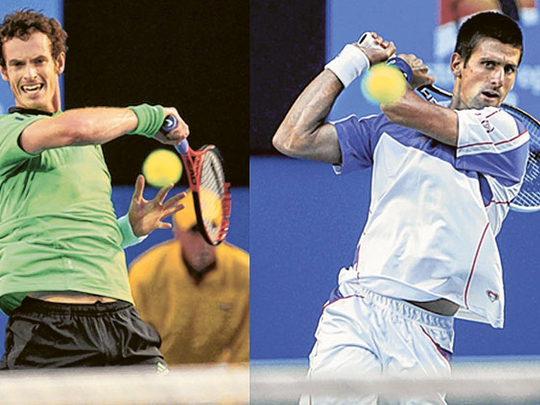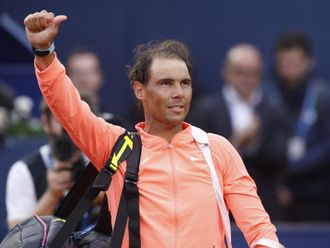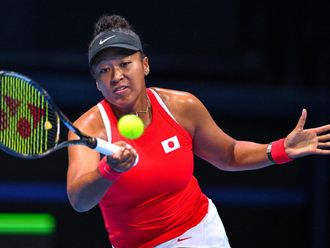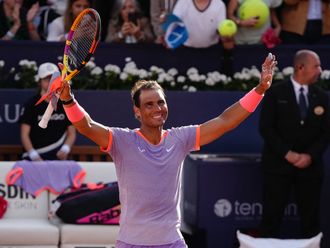
Melbourne: There used to be an American TV show called MacGyver, in which the hero was an ordinary joe with a Swiss Army knife and a gift for lateral solutions.
MacGyver wasn't especially big or strong, but he could defuse a nuclear bomb with a paperclip.
What's this got to do with Andy Murray, you may be asking. Well, on semifinal showing, Murray will go into the final against Novak Djokovic relying on ingenuity and native cunning.
Judging by their respective semi-final performances, the British No 1 will not be able to overpower his old friend and rival, but he might have a chance of outwitting him.
You could see the wheels of Murray's mind turning as he limped his way through a painful first set. Surprised by the lack of pace in a cool Rod Laver Arena, he was drawn into an early dog-fight with David Ferrer — a Spanish terrier who resembles the young Lleyton Hewitt in his tenacity and general court-coverage.
The rallies often extended to 20 or 30 shots as the two men pounded the ball back and forth so robotically that you might imagine they were being paid by the stroke. It was tennis the way Ferrer likes it, and as Murray admitted afterwards, "he wasn't missing a ball" during these grinding early exchanges.
After 90 minutes, things had grown so desperate that Murray was one point from conceding a two-set lead. But he got away with that one, hammering an unreturnable serve up the middle to stave off whispers of a choker's mentality. Then came the turnaround, as Murray changed his tactics, his string tension, and even his position on the court.
Rhythm and consistency
"I started to play a lot more aggressive," he said. "By stepping in, hitting my returns harder, and going for big shots earlier in the rallies. I had to go to Plan B and luckily it worked."
There is Murray's strength. He does not have a single weapon to rank with Roger Federer's serve or Rafael Nadal's forehand. But he does have a computer for a brain, and he excels at analysing a match and coming up with solutions.
Switching to Plan B is harder than it sounds, as tennis is a sport where rhythm and consistency are essential. But Murray carried it off cleverly in the third set, as he used a series of short slices to draw Ferrer off the baseline and into no-man's land in the middle of the court.
It did not matter that many of these points were lost, the intention was to knock the Spaniard out of his bubble, and even-up the error count. Until that point, Senor Consistency had been just too steady to shift. Aside from a hot spell at the end of that third set, this was not a great performance by Murray.
— The Telegraph Group Limited, London 2011












